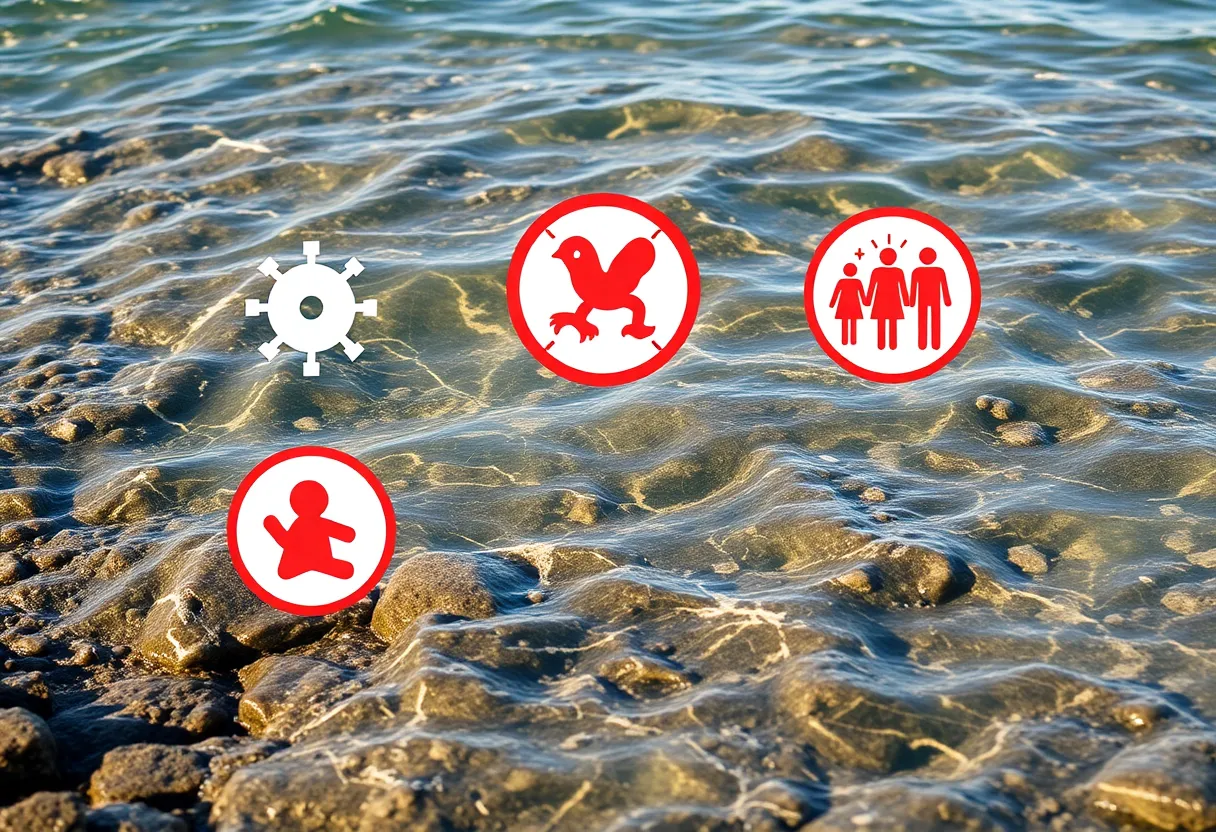News Summary
The southeastern U.S. is facing a rise in infections and deaths linked to Vibrio vulnificus, a flesh-eating bacteria. Florida reports 16 cases and five deaths, while Louisiana and North Carolina also see increases. Health experts warn that rising ocean temperatures and possible hurricane activity may be contributors. Vulnerable populations, including those with liver issues and the elderly, are at higher risk. Preventive measures and prompt medical attention are crucial to manage the threat posed by this dangerous bacterium.
Florida – The southeastern coasts of the United States are experiencing a worrying increase in deaths linked to the flesh-eating bacteria Vibrio vulnificus. Reports indicate the year has already seen at least five fatalities in Florida, four in Louisiana, and one in the Outer Banks of North Carolina due to infections caused by this dangerous bacterium.
Data from Florida’s health department reveals that the state has recorded 16 cases of Vibrio vulnificus this year. Louisiana is closely trailing with 17 reported cases, which reflects a rise over past years’ averages. North Carolina has confirmed seven cases so far, as reported by the state’s Department of Health and Human Services, while Mississippi has documented three cases this year.
Vibrio vulnificus, which thrives in warm seawater, can cause severe conditions, including necrotizing wounds, commonly known as necrotizing fasciitis. This infection often begins when the bacteria enter the body through open wounds or through the consumption of contaminated foods, particularly raw oysters, which are common in coastal diets.
The Centers for Disease Control and Prevention (CDC) estimates that about one in five individuals infected with Vibrio vulnificus dies, highlighting the seriousness of the issue. Experts have observed a notable uptick in infections this year, expressing concerns that “something is off” compared to previous years. As typically occurs, infections tend to surge after major hurricanes due to the bacteria’s ability to persist in floodwaters, making communities vulnerable.
In Florida, where a total of 82 cases were reported last year—potentially influenced by active hurricane activity—the numbers indicate a concerning trend. The rising ocean temperatures also seem to contribute to the spread of Vibrio infections, pushing cases further north to states such as New York and Maryland.
The symptoms of a Vibrio vulnificus infection can manifest within hours and include symptoms such as redness, swelling, and telltale “bull’s-eye” blisters. In severe cases, the infection can escalate to bloodstream infections and sepsis, conditions which can prove fatal. Particular attention is warranted for individuals such as those with liver cirrhosis, weakened immune systems, or those over the age of 65, as they are at a greater risk for complications from these infections.
The primary treatment for Vibrio vulnificus infections involves the use of antibiotics. In terms of prevention, health experts advise individuals to cover any open wounds before entering ocean waters, even using waterproof bandages, to reduce the risk of infection. Additionally, it is crucial for anyone noticing early symptoms to seek medical care promptly; delaying treatment can lead to more severe health complications.
It’s important to understand that Vibrio bacteria are naturally occurring in the waters along coastal regions and do not generally affect healthy individuals. Each year, Vibrio bacteria are responsible for approximately 80,000 infections, primarily associated with contaminated food. Although Vibrio vulnificus constitutes a small fraction of these infections—approximately 100-200 cases annually—it is known to cause serious health issues.
As health authorities continue to monitor this troubling trend, public awareness and education on preventive measures can play a vital role in reducing the risk of infection and protecting vulnerable populations along the southeastern coastline.
Deeper Dive: News & Info About This Topic
- NBC News
- Wikipedia: Vibrio_vulnificus
- People
- Encyclopedia Britannica: Vibrio vulnificus
- Today
- Google News: Flesh-eating bacteria

Author: STAFF HERE NEWORLEANS WRITER
The NEW ORLEANS STAFF WRITER represents the experienced team at HERENewOrleans.com, your go-to source for actionable local news and information in New Orleans, Orleans Parish, and beyond. Specializing in "news you can use," we cover essential topics like product reviews for personal and business needs, local business directories, politics, real estate trends, neighborhood insights, and state news affecting the area—with deep expertise drawn from years of dedicated reporting and strong community input, including local press releases and business updates. We deliver top reporting on high-value events such as French Quarter Festival, New Orleans Jazz & Heritage Festival, and Essence Music Festival. Our coverage extends to key organizations like the New Orleans Chamber of Commerce and Greater New Orleans, Inc., plus leading businesses in energy, healthcare, and education that power the local economy such as Entergy, Ochsner Health, and Tulane University. As part of the broader HERE network, including HEREShreveport.com, we provide comprehensive, credible insights into Louisiana's dynamic landscape.




